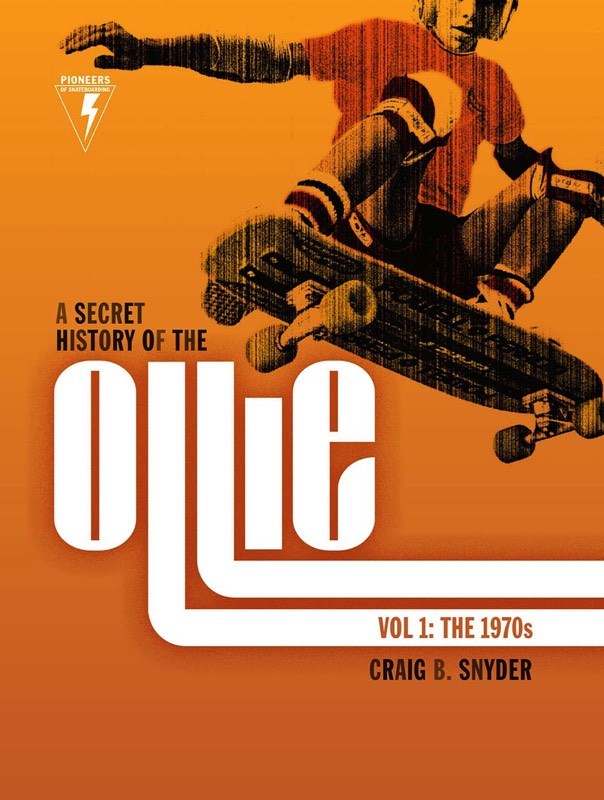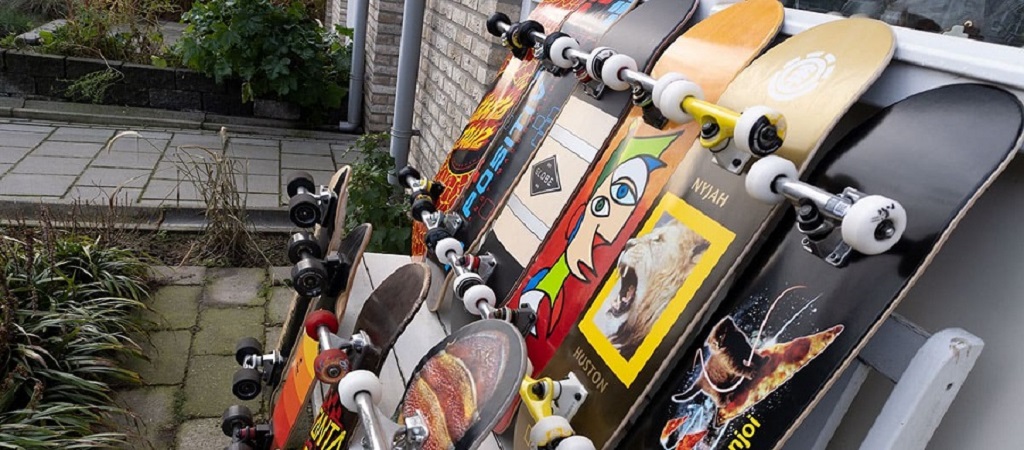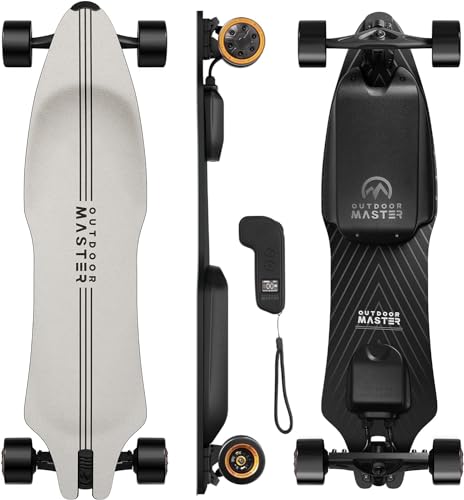The inventor of the skateboard remains unknown, as it evolved from surfers improvising with wheeled boards. Skateboarding history began in the 1940s and 1950s as an offshoot of surfing culture.
Exploring the origins of skateboarding takes us back to the sunny coastlines of California where surfers sought the thrill of riding waves on land. This innovative sport, originally called “sidewalk surfing,” provided surfers with the ability to replicate the feeling of catching waves when the sea was too calm.
The evolution of skateboarding has been remarkable, turning into a global phenomenon with its subculture. Skateboards have transformed from simple wooden planks with roller skate wheels to sophisticated pieces of equipment designed for performance and durability. This constantly evolving sport appeals to a diverse range of enthusiasts, from street skaters to vert ramp professionals, solidifying skateboarding’s place in both sporting and cultural history.

Credit: www.nola.com
The Origins Of Skateboarding
Delving into the history of skateboarding reveals a tale of creativity and cultural fusion. Initially surfacing as a pastime, skateboarding quickly transitioned from a leisurely pursuit into a global phenomenon. The journey from the wave-riding thrills of the ocean to the asphalt adventures of the city encompasses innovation, community, and the pursuit of freedom. Let’s explore the beginnings of this dynamic sport and how it shaped the lives of countless enthusiasts around the world.
Early Inspiration From Surf Culture
The first wave of inspiration for skateboarding came, quite literally, from the ocean. Surfers in California, craving an alternative when the seas were calm, sought to replicate the feeling of riding waves on terra firma. This desire spurred the creation of the first skateboard, an embodiment of surfing on land, which soon earned the moniker ‘sidewalk surfing’.
The Birth Of Sidewalk Surfing
As the name suggests, sidewalk surfing captured the essence of surfing but adapted it to the urban environment. Agility and balance, key elements in surfing, found a new home on the concrete paths. The earliest skateboarders would take to their local streets, improvising moves and stunts that mimicked the actions of surfing, laying down the foundation of a subculture that would grow exponentially.
Diy Skateboards And Early Innovations
The resourcefulness of the skating community shone in the earliest stages when commercial skateboards were yet to exist. DIY skateboards were crafted from whatever materials were available, typically comprising wooden planks and roller skate wheels. These homemade boards, although rudimentary, fostered a wave of innovation that eventually led to the specialized skateboards we see today. Early enthusiasts experimented with board shapes, sizes, and configurations, each tweak and adjustment contributing to the evolution of skateboard design and performance.
Embracing the spirit of innovation, daring skaters began introducing new tricks, each more inventive than the last. From the simplest moves on neighborhood sidewalks to acrobatic feats at skating competitions, these early innovations set the stage for a diverse array of skateboarding styles and techniques that thrive to this day.
Clay Wheels And Box Skateboards
The tale of the skateboard’s invention is a story of innovation, creativity, and the relentless pursuit of fun. Often overlooked, one critical component in the evolution of skateboarding was the Clay Wheels and Box Skateboards period. This era witnessed the transition from simple homemade contraptions to slightly more sophisticated designs that would eventually spark the imagination of thrill-seekers worldwide.
The Craze For Clay Wheels
Initially, skateboards were nothing more than wooden planks with roller skate wheels attached to the bottom. The leap to clay wheels marked a significant turning point. Skaters found that these wheels, albeit brittle and prone to wear, offered an exhilarating ride down the sun-kissed pavements of California. Despite their shortcomings in durability and grip, clay wheels were revolutionary — they were the starting point of an entire subculture.
- Enhanced smoothness on concrete surfaces
- A new level of speed and mobility
- Introduction of the surf-inspired sidewalk surfing
The Pioneering Skateboard Designs
The simplicity of Box Skateboards — a nickname given to the rudimentary boards, was also their charm. These DIY contraptions were often made by attaching the two halves of a dismantled roller skate to a wooden crate or a box, giving the board a makeshift set of trucks and axles. Over time, these boxes were replaced with plank-style boards, setting in motion the evolution of skateboard design. This change was crucial; it began to shape the skateboard into the form we recognize today.
| Period | Design Evolution | Cultural Impact |
|---|---|---|
| 1940s-1950s | Roller skate wheels on wooden planks | Skateboarding emerges as a pastime |
| 1950s-1960s | Introduction of clay wheels | Surf culture adopts skateboarding |
The Birth Of The Skateboard Industry
As the popularity of skateboarding began to skyrocket, enterprising individuals and companies took notice. The informal creation and assembly of boards soon turned into a commercial venture. The birth of the skateboard industry was headlined by the production of preassembled skateboards which now featured improved designs and better materials. These mass-produced boards brought skateboarding from the backyard to the mainstream and laid the groundwork for an industry that would continue to innovate and grow for decades to come.
- Early commercial boards hit the market
- Improvements to board design and wheel composition
- Skateboarding’s ascent from underground to mainstream recognition
Who Invented The Skateboard?
Skateboarding, with its deep cultural impact and global following, has a history clothed in mystery and folklore. It’s not just a sport, a pastime, or a mode of transport – it’s a way of life that has influenced fashion, music, and culture worldwide. The quest to identify the true inventor of the skateboard is akin to piecing together a storied tapestry of innovators and enthusiasts.
The Forgotten Heroes Of Skateboarding
Behind every kickflip and ollie lies the ingenuity of forgotten heroes. The early skateboard inventors were not focused on fame or patents; they were surfers looking for thrills on land when the waves were wanting. These pioneers crafted makeshift boards in garages from wooden boxes and roller-skate wheels, laying down the groundwork for the modern skateboard. Though their names may not echo through history, their creations birthed a new wave of athletic artistry.
Unveiling The True Pioneer
While the collective effort to create what we know as the skateboard spans across various individuals, the true pioneer is elusive. Some accounts suggest that the skateboard first came to the scene in the late 1940s to the early 1950s. A specific person as the sole inventor remains shrouded in obscurity, with different groups across California and Hawaii molding the sport independently. The “father of modern skateboarding” title often fluctuates among several visionaries who enhanced the board’s design and performance.
The Impact Of Skateboarding Pioneers On Modern Culture
The ripple effect of the skateboard’s invention resonates beyond the confines of sports. Sidewalk surfers inspired generations, influencing lifestyle brands, language, and even the world of entertainment.
- Skateboarders carved a niche in urban culture, respected for their craft and rebellious spirit.
- Grind rails and half-pipes became concrete canvases for athleticism and creativity.
- The pioneering spirit ignited global events like the X-Games, connecting communities and inspiring individuality.
Each push and pivot on a skateboard has traces of its originators’ desire to defy gravity and convention. Their impact is immeasurable, their legacy is indelible.
Evolution Of Skateboarding
The narrative of skateboarding is as dynamic as the sport itself. Its origin is often attributed to surfers looking for a thrill on land, skateboarding has undergone a remarkable transformation. From makeshift wooden boards with roller skate wheels to the high-performance skateboards we see today, the journey of this street sport is a testament to innovation and cultural integration. Let’s delve into the defining decades that shaped skateboarding.
Skateboarding In The 70s And 80s
The ’70s and ’80s are the eras where skateboarding started carving its niche. Urethane wheels replaced the precarious clay wheels, providing a smoother ride and better traction, revolutionizing how skateboarders rode their boards. During the 70s, the introduction of the kicktail, the upward bend at the end of the board, made tricks and maneuvers possible, propelling skateboarding into a new dimension.
In the 80s, skateboarding took a fierce turn. Vert skating gained prominence as skateboarders pushed the boundaries of what could be done on a half-pipe. Names like Tony Hawk and Rodney Mullen became legends, inspiring a generation to see skateboarding not just as a pastime but as a lifestyle.
Technological Advancements In Skateboard Design
- Lighter, stronger decks – With materials like Canadian Maple and bamboo, boards became durable and offered better flexibility.
- Improved truck designs – Trucks evolved to provide enhanced stability and precise control over the skateboard.
- Wheel technology – The advent of polyurethane wheels transformed skateboarding from a novelty into a serious sport due to improved grip and reduced vibration.
These advancements have allowed skateboarders to perform intricate tricks with increased confidence and have been critical to the sport’s progression.
The Rise Of Skateboarding As A Professional Sport
Skateboarding’s transition into a professional sport was bolstered by global competitions and corporate sponsorships. The establishment of events like the X Games allowed skateboarders to showcase their skills to the world, providing a platform that celebrated the sport’s most talented individuals.
Skaters like Tony Hawk further popularized the sport, with significant media coverage and video game titles. Skateboarding’s growing recognition as a sport reached a pinnacle when it was introduced to the Olympic Games, cementing its status on the world stage.
Legacy Of Skateboarding Pioneers
Delving into the colorful tapestry of skateboarding history reveals a blend of art, athleticism, and innovation that has been passed down through generations. The exact origins of who invented the skateboard may be hazy, with several individuals claiming the title, but there’s no question that its evolution was driven by the imagination and daring of its early pioneers. These trailblazers laid the groundwork for a culture that would become a global phenomenon, leaving an indelible mark on society and shaping the lives of countless enthusiasts.
Honoring The Pioneers’ Contributions
The skateboard might not have soared to such heights without the early visionaries who saw the potential in a wheeled plank. From adjusting wheels to modifying decks, their relentless pursuit of a better ride carved the path for today’s high-flying tricks and ultra-sleek boards. Each innovative tweak and bold stunt pushed the boundaries, setting the stage for the skateboarding renaissance of the ’70s and beyond.
Influence On Contemporary Skate Culture
The ripple effect of the pioneers’ creativity is vivid in today’s skate culture. Modern skaters owe much to the past, including the very style and swagger that defines the skateboarding ethos. From backyard pool sessions to the creation of skate parks and pioneering magazines, these influences permeate the gritty aesthetic, DIY spirit, and tight-knit community that characterize the scene.
The Enduring Impact Of Early Innovations
The foundations laid by the original creators continue to resonate. Early innovations such as kicktails, grip tape, and polyurethane wheels remain crucial to skateboard design. Such advances not only improved safety and functionality but also expanded the realm of what skaters could achieve, granting them the freedom to explore new horizons in both urban environments and competitive arenas.
- Polyurethane Wheels: Changed the game with a better grip and a smoother ride.
- Adjustable Trucks: Allowed for greater maneuverability.
- Grip Tape: Provided necessary traction for complex tricks.
Frequently Asked Questions On Who Invented The Skateboard
Who Is Credited With Inventing The Skateboard?
The skateboard’s invention is not attributed to a single person. It evolved, with contributions from multiple skate enthusiasts. The first skateboard-like contraptions appeared in the 1940s and 1950s, created by attaching roller skate wheels to wooden boards.
What Year Was The First Skateboard Made?
The first commercial skateboards were made in the late 1950s. However, makeshift versions created by attaching roller skate wheels to planks existed as early as the 1940s. The skateboard’s design and popularity took off during the 1960s.
How Did Skateboarding Originally Start?
Skateboarding started as sidewalk surfing for surfers when the sea was flat. Surfers in California attached roller skate wheels to planks of wood to mimic surfing on land. This practice evolved and became popular with youth, leading to the development of the modern skateboard.
What Materials Were Original Skateboards Made Of?
Original skateboards were rudimentary, made by attaching metal roller skate wheels to wooden boards. These were often homemade from planks of wood, resembling the shape of surfboards, which is why skateboarding was initially referred to as “sidewalk surfing. “
Conclusion
Tracing the origins of the skateboard reveals a tale of innovation and shared effort. From makeshift backyard projects to global cultural phenomena, skateboarding’s inventors have left a legacy of thrill-seeking spirit. As we ride into the future, their creativity and daring continue to inspire new generations.
Remember, every ollie and kickflip started with a simple idea and a love for the ride. Keep shredding!




